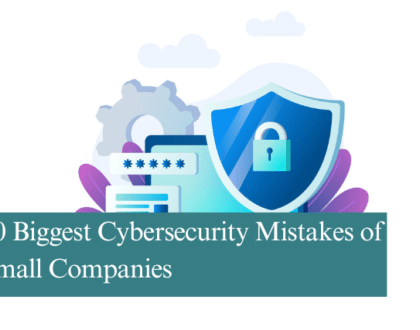
As concern for the environment grows, sustainability has become essential to saving the planet. What most people may not know is that technology also plays a role in sustainability. One example that we’ll explore today is the smart building.
How can a smart building contribute to sustainability? That’s a quandary, especially considering that most homes rely on electricity and other utilities.
In this article, we take a look at how smart buildings can be sustainable. Let’s get started!
What is a Smart Building?
Before we get into how a smart building can contribute to sustainability, it’s essential to understand what a smart building is.
According to Cisco a smart building brings together different systems into an IT managed network infrastructure. The systems involved may include security, lighting, alarm systems, HVAC, and more.
A smart building collects data from across the building and uses artificial intelligence and machine learning (AI/ML) to make the building programmable and responsive to users in the building.
With such automated, intelligent systems in place, a smart building automatically becomes sustainable. The building’s network controls the amount of energy used and has the capability to ensure the structure is energy efficient.
Technology Helps Smart Buildings Become More Sustainable
Smart buildings rely on technology to make them more sustainable. For instance, IoT (Internet of Things) is crucial for the digital transformation of organisations. With the right technology, building managers can collect and analyse data to uncover helpful data and modernise operations.
IoT allows smart buildings to be more sustainable by optimising energy usage. These buildings use smart plugs, voice-activated AC controllers, smart thermostats, and other loT devices to reduce energy usage. IoT sensors are used to monitor and detect room occupancy and adjust the lighting, cooling, and heating systems to conserve energy in the smart building.
It’s not only office buildings that are smart, but also data centres. Data centres are notorious for the amount of energy needed to keep them up and running. However, when the data centre is housed in a smart building, these centres can become more sustainable.
Data centres have the ability to measure their energy usage and to make sure the energy is used efficiently. They can do this by using Power Use Effectiveness (PUE) targets. The result is that smart data centres can help a company reach its sustainability goals.
Lighting & Sustainable Material Use
The use of technology and materials in a business environment may not seem like much. However, each sustainable step contributes to creating a more sustainable environment. A company can use various methods to become more sustainable with the energy and material it consumes, for instance:
- The business can recycle old IT equipment, paper, and plastic
- The company can set its computers to sleep mode
- And an organisation can invest in smart technologies, such as loT, to analyse and change its building’s energy use
Taking each of these steps has a positive effect on the environment and helps an organisation to save money as it becomes more sustainable.
ESG in the Business & Supply Chain
ESG is an abbreviation that stands for “Environmental, Social, and Governance.” The term is used to measure and report how companies/buildings perform on factors such as sustainability goals and having an ethical impact on the social environment (such as decent work, economic growth, health & wellbeing, and more).
What’s more, many companies go further and review their supply chains to ensure they’re also sustainable. These partnerships, if they follow the same values, can increase the positive impact on the environment.
Why Smart Buildings are Essential for Sustainability
Smart buildings that rely on IoT share information, control operations, and make human interactions more positive. But they also have a positive impact on the environment in the following ways.
- Increased Efficiency
Buildings require plenty of energy to operate. When they don’t run efficiently, buildings can have a negative impact on the environment. They often use more resources than necessary, too.
Smart buildings, on the other hand, are capable of using technology to track how much energy is used, how & where it’s used, and more. These structures have the ability to adjust conditions, such as temperature, to make a space more comfortable without using excess energy. Human input is not required in most instances.
- Enhanced Communication
Smart buildings also use technology to make it easier for people to work together. The buildings rely on cloud-based networks that make communication clear and simple. This works to optimise performance and makes it easier to monitor progress.
The result is that operations are more streamlined, and effective communication is possible. Employee satisfaction can also increase as a result. When teams have access to these resources, they can gather more data and improve their productivity.
- Easier Data Collection
Collecting data is a simple process with IoT devices. They can monitor heating systems, ventilation equipment, and sensors can be added to different appliances. A smart building makes it easier and faster than ever to gather essential data on all aspects of company operations. For instance, if a component is not being used effectively, it’s possible to adjust operations using modern tools.
- More Sustainability
Smart buildings are truly an excellent way for a business to increase its sustainability. With the data gathered by the building, a company can reduce its carbon footprint, improve sustainability in all areas, and use eco-friendly alternatives (where possible).
The software can save a business energy and money while lowering emissions at the same time. All of this is possible with a smart building.
Concluding Thoughts
The future of sustainability involves smart buildings run with IoT. Not only that, but smart buildings will also be able to lower their operational costs, resulting in lower energy costs and emissions. Smart technology also ensures that smart buildings offer great flexibility when it comes to employee comfort and wellbeing.
Fortunately, smart buildings are possible now, and it’s not necessary to wait for the future. Your company can become more sustainable now by making your business premises smart by using the right technology now!
Recommended Posts

How to Get the Most Out of Your IT Budget
25th April 2025

10 Biggest Cybersecurity Mistakes of Small Companies
18th April 2025

The Importance of Planning in Business IT Solutions
11th April 2025
